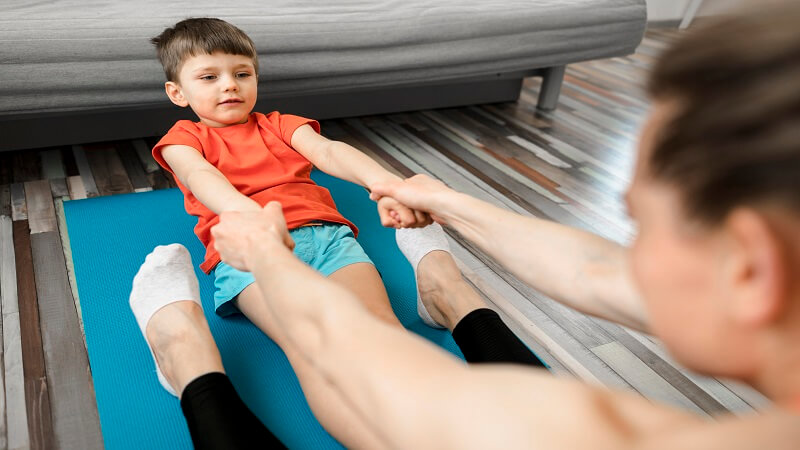Physical therapy is not just for adults. Children also benefit, and pediatric PT is designed to help kids of all ages with acquired and congenital conditions. When searching for physical therapy near me for your child, ask if they provide physical therapy for kids, as not everyone does. Before making an appointment, it may help to understand what to expect.
Who Is Pediatric Physical Therapy For
Pediatric physical therapy in Austin helps treat children from birth through the age of 18. Some common reasons a doctor will refer a child to physical therapy include:
- Autism
- Cerebral palsy
- Muscular dystrophy
- Spina bifida
- Down syndrome
- Hypotonia
- Developmental delay
A doctor’s recommendation is not required for parents to start their children in physical therapy. Parents may seek this type of treatment if their child received injuries from playing sports, a car crash, or another accident. PT can also help with torticollis, which is when the neck is twisted and tight, and toe walking.
During the initial appointment, the pediatric physical therapist will conduct an exam and ask about the child’s medical history. The therapist will recommend a treatment plan that may include a variety of therapeutic methods. The duration of a plan is usually a number of weeks or months, depending on your child’s symptoms and situation.
The Key Benefits of Pediatric Physical Therapy
When your child experiences physical therapy near me, you may notice a number of benefits.
Reduced Pain and Symptoms
As a parent, you hate to see your child suffer. If your child experiences pain or other symptoms due to his or her condition, the initial goal of the physical therapist is to reduce this. Methods that the therapist uses to alleviate symptoms may include heat or ice packs, trigger point therapy, manual therapy, massage, or dry needling.
Improved Coordination and Motor Development
Once the symptoms are reduced or gone, or if your child is not there for pain relief, the fun can begin. Unlike physical therapy for adults, much of what is done for children involves play of some kind. The equipment and tools used to encourage movement are colorful and kid friendly. During a session, your child may use:
- Small trampolines
- Therapy balls
- Foam rollers
- Balance beam
- Hoops
- Toys
If your child is in physical therapy for a sports or other injury, therapy may resemble adult rehabilitation, such as exercises and stretching.
The result of pediatric PT is better coordination, balance, and general movement.
Increased Confidence and Independence
Some children who seek physical therapy have conditions that impair them physically and mentally, which can make it challenging to live a normal life. When they improve due to their PT sessions, you will see their confidence rise, as they are able to do more things independently.
One way that pediatric physical therapy differs from adult PT is that it often requires family involvement. You may be given instructions on things you can help your child with at home to support his or her journey. Being engaged and involved as a parent is helpful and beneficial.
Visit kaz info time for more details.
